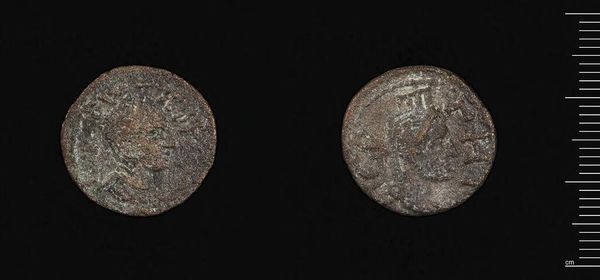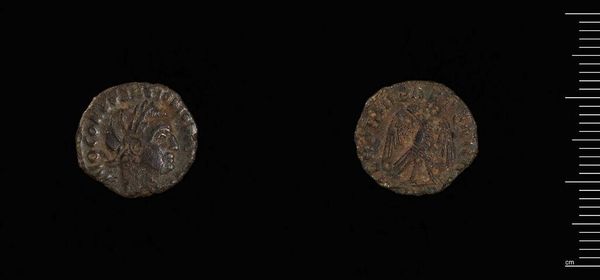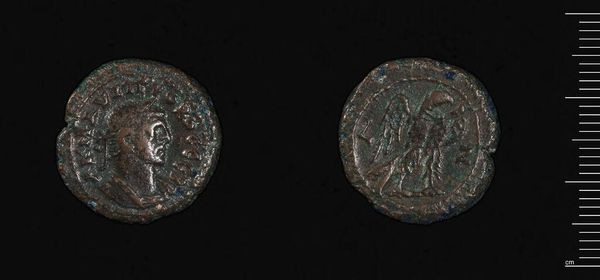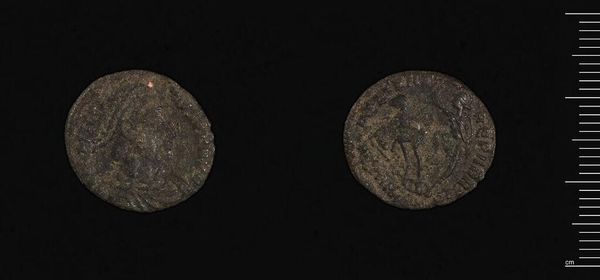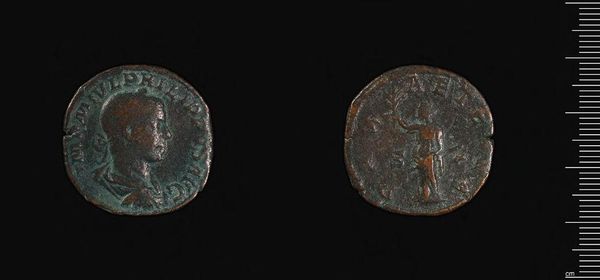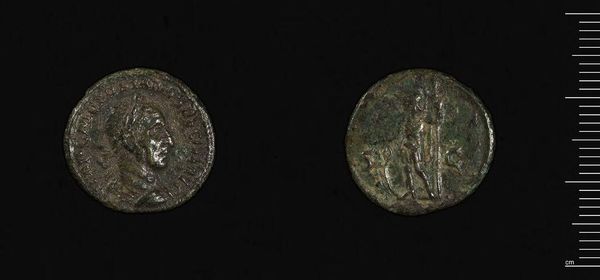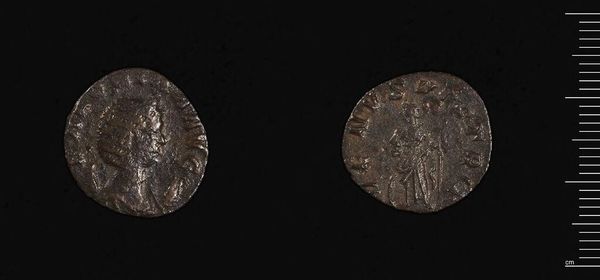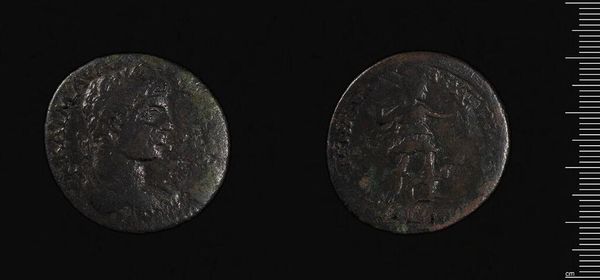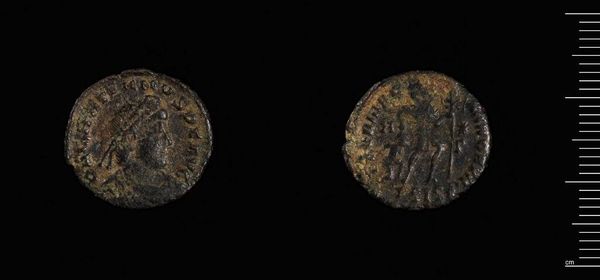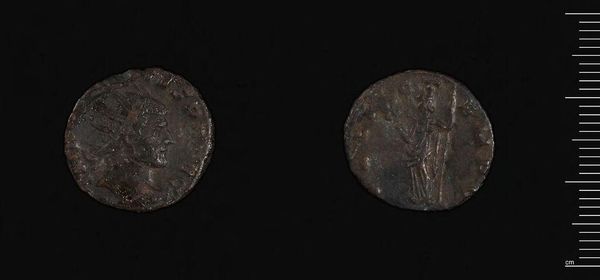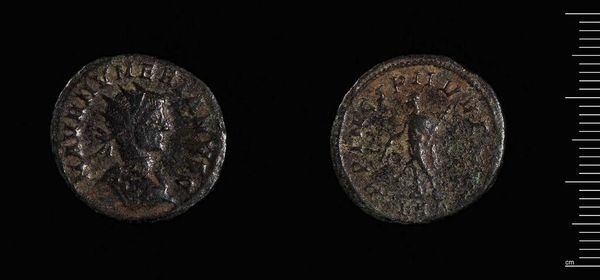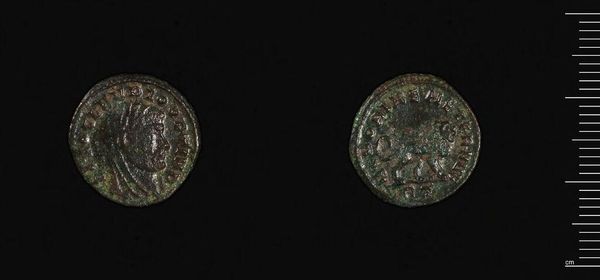
Dimensions: 15.85 g
Copyright: CC0 1.0
Curator: This is a coin minted during the reign of Gallienus, specifically a "Coin of Side under Gallienus," currently residing in the Harvard Art Museums. Editor: It's amazing how something so small can carry such weight, isn't it? The corrosion and wear suggest a long history of circulation and exchange. Curator: Indeed, the materials themselves, likely bronze, tell a story of trade, labor, and the very infrastructure of the Roman Empire. Each strike of the die represents a deliberate act of production. Editor: And each coin served as a powerful visual tool—one side depicting the emperor, the other often referencing deities or imperial virtues, embedding propaganda within everyday transactions, impacting social and power dynamics. Curator: Precisely. Consider also the metallurgical processes involved and the distribution networks required. This wasn't just about imagery. The metal's value was intimately tied to the empire's reach. Editor: I find myself reflecting on the uncredited laborers who extracted and refined the metal, and who physically produced the coin itself. The coin's value only exists due to the exploitation of their labor and the violent expansion of empire. Curator: An excellent point. Examining coins like this illuminates the material conditions underpinning ancient economies and societies. Editor: It also urges us to question the narratives of power perpetuated through art and objects, encouraging a more comprehensive understanding of history.
Comments
No comments
Be the first to comment and join the conversation on the ultimate creative platform.
